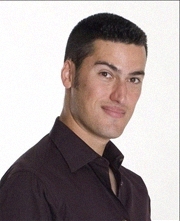Tutor HuntResources Creative Writing Resources
Writing For Children
What makes a piece of writing a children`s book?
Date : 03/08/2012
Author Information

Uploaded by : Joe
Uploaded on : 03/08/2012
Subject : Creative Writing
To start with the obvious: the main characters are children and the main themes are those that children will relate to, whether consciously (family dynamics, school stories etc) or subconsciously (empowerment of the most vulnerable, discovery of mysteries etc).
Fine. I don`t think that`s entirely necessary, but I don`t want to get bogged down on it now.
There are also, of course, more superficial factors: in children`s books I tend not to use cumbersome vocabulary (or as I would call them, `long words`) or anything that would be considered `unsuitable` by parents.
Again, fine. Again, not entirely necessary, but not what I want to talk about.
Because I think there are more interesting differences.
I reckon that children`s novels tend to prioritise conflict and structure, whereas adult fiction places more importance on character and setting.
Let me quickly add: those 4 things are not in opposition to each other, though I realise I`ve phrased this so that it might seem that way. Conflict, structure, character and setting all feature in every story. In the best books they work together beautifully. And of course, at least one of them - conflict - is fundamental to all stories, whatever the intended audience.
I just think that the relative weighting of these elements differs between children`s books and adult fiction.
SETTING is the easiest one to illustrate. There are some children`s books that feature stunning settings, beautifully evoked. But there are many more adult novels that are, basically, wholly about their setting.
I can`t imagine describing any children`s book as, for example, `an amazing depiction of life in 1950`s America`. Or saying, of a children`s book, `brings to life the world of Eighteenth Century Paris`. There may be some children`s books of which those statements are true, but they wouldn`t be the first things you`d say about them. In the end you probably wouldn`t mention them at all. You`d be too busy talking about the plot.
CONFLICT creates plot. But it seems to me that children`s books require a more obvious level of conflict, and that they emphasise what I would call `outer` conflict (trouble brewing in the world, or danger coming to your doorstep) rather than `inner` conflict (psychological demons, addiction, guilt etc). My favourite stories combine a bit of both, and that`s what I try to do with Jimmy Coates, but the balance in children`s books (including my own, I have to admit) seems to be more towards outer - and very obvious - conflict.
Compare that to all of those adult novels where, basically, nothing much happens except for a subtle shift in a character`s outlook.
STRUCTURE seems more obvious in most children`s books too. Of course, all stories have some kind of structure, but in children`s books you can almost see the scaffolding. That`s not a criticism - all I mean is that an adult reader is less likely to need that constant comfort of feeling that the shape of the story follows a familiar contour. Most children probably aren`t consciously aware of the structure of the books they`re reading, but if it weren`t there, they`d be more likely to feel uneasy or impatient with it.
I constantly hear said of my own books that the action keeps readers gripped. That`s a great compliment, and it`s lovely that otherwise impatient readers get a lot out of Jimmy Coates, but it`s not the action that`s doing it. That`s an illusion. It`s the structure. I`m pretty sure of that.
CHARACTER is at the centre of story-telling. It`s right in there with conflict. There are some fantastic children`s book characters, but don`t they tend to be embroiled in correspondingly active plots, to which they react? Whereas in an adult book, you`re much more likely to get a character who does nothing, but who IS.
Simply being, however interesting the character, is not an option you see taken much in children`s books. Nor is the being of the character very often the catalyst for the story, the way that it might be in an adult novel.
So: Children`s books emphasise conflict and structure. Adult fiction emphasises character and setting.
There will be counter-examples. I expect you to bring them to my attention.
This resource was uploaded by: Joe
